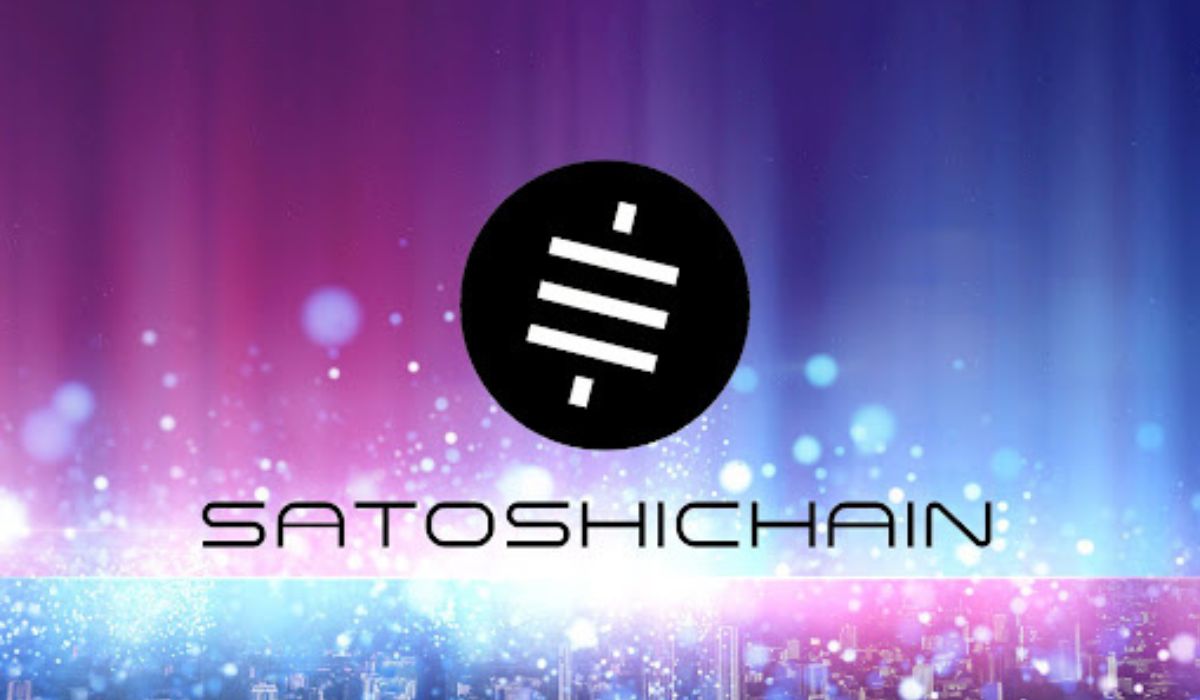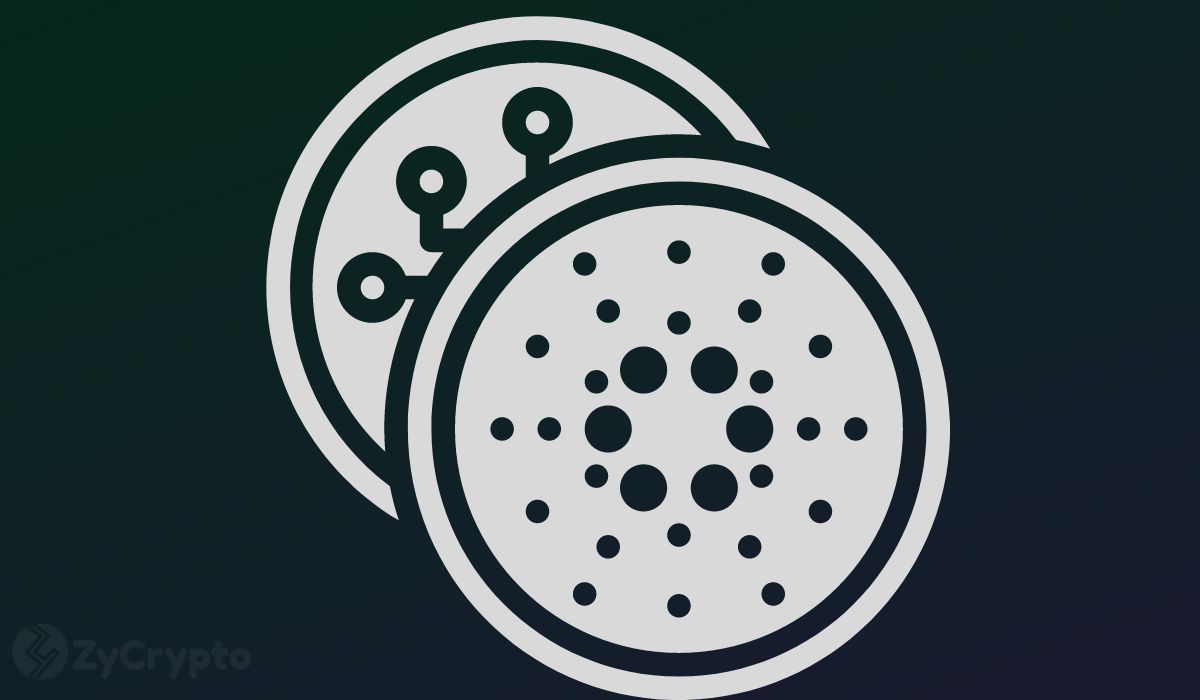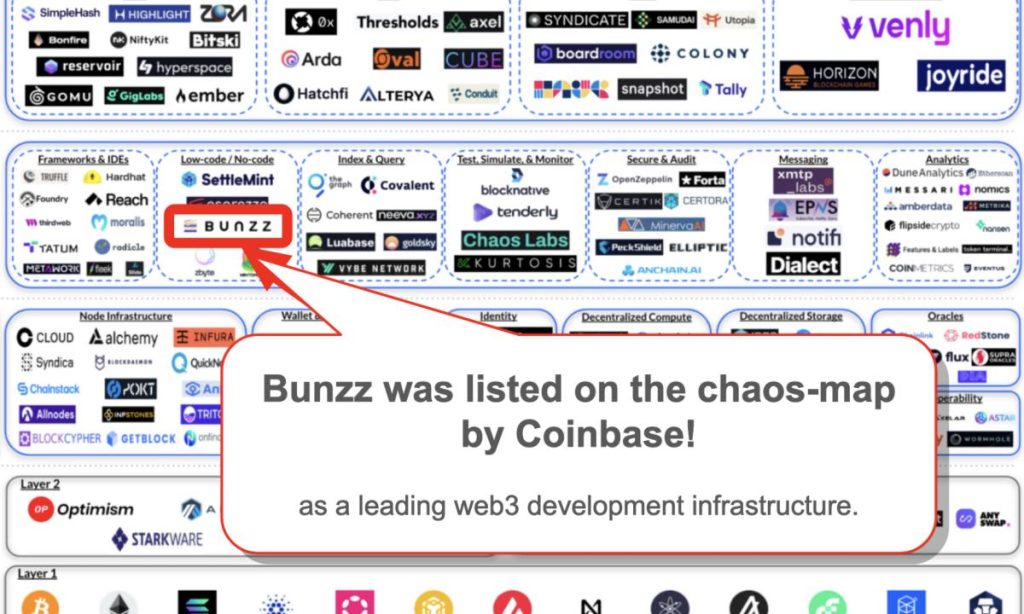
2023-4-18 00:51 |
Decentralized applications (dApps) are software applications built on decentralized networks like blockchains. They operate with a peer-to-peer model, allowing users to interact with each other directly without the need for intermediaries like traditional centralized applications.
The decentralized nature of dApps means that a single entity or authority does not control them; rather, they are driven by a distributed network of computers that collectively maintain the integrity and security of the application. This makes dApps resistant to censorship and other forms of centralized control. Furthermore, they offer a range of advantages over centralized applications, including greater transparency, improved security, and enhanced privacy.
However, like many blockchain solutions, one of the main challenges facing dApps is scalability. Scalability refers to the ability of a blockchain network to handle increasing numbers of users and transactions without compromising its performance. Some key scalability challenges in dApps include network congestion, limited processing power, storage limitations, governance issues, etc.
To address these challenges, developers are taking several blockchain technology approaches to improve the scalability of dApps. These include the use of sharding, off-chain scaling solutions, and the adoption of new consensus algorithms. Ultimately, the success of dApps will depend on the ability of developers to create scalable and efficient systems that can meet users’ needs and handle increasing volumes of transactions over time. This article discusses how blockchains are revolutionizing scalability in dApps.
Scalability in Decentralized ApplicationsScalability in decentralized applications (dApps) refers to the ability of a decentralized application to handle an increasing number of users and transactions without a significant increase in transaction time or decrease in performance. In other words, scalability is the ability of a dApp to handle a growing user base and transaction volume without experiencing a significant slowdown in the speed and efficiency of the application.
The Importance of Scalability in DAppsScalability is a critical factor determining the success of decentralized applications. Unlike centralized applications, dApps operate on a decentralized network where all nodes must agree on the validity of transactions before they can be added to the blockchain. This process can be slow, especially when many users and transactions are on the network.
As a result, their success depends on their ability to handle an increasing number of users, transactions, and data volumes without significant performance degradation.
Therefore, scalability is critical for creating a competitive market for dApps, as users will be attracted to applications that offer fast transaction times and low fees. Without the ability to scale, dApps will struggle to handle a large number of users and transactions, impacting their adoption and success.
Furthermore, scalability is essential for attracting developers and investors, who need to see a strong user base and network capacity before committing resources to the project.
Common Scalability Issues in DAppsAs mentioned earlier, decentralized applications (dApps) are software programs that operate on a blockchain network, providing users with decentralized and trustless access to various services and applications.
However, as user demand increases, dApps face significant scalability issues that can affect their performance, usability, and adoption. Building scalable dApps can be challenging due to several issues. Some common scalability issues in dApps include:
Network Congestion: One of the main challenges of scalability in dApps is network congestion. As the number of users and transactions increases, the blockchain network can become congested, leading to slow transaction processing times and high fees. For example, blockchain networks such as Ethereum have a limited capacity to process transactions per second, which can result in network congestion during high usage periods. As a result, dApps that rely on these networks can experience slow transaction speeds and high fees. Limited Processing Power: Another challenge of scalability in dApps is limited processing power. Some blockchain networks need more processing power and help to handle the high transaction volumes required for large-scale applications. As a result, smart contracts used to build dApps and run on these networks will have processing power limitations, which can limit the scalability of dApps that rely on them. In addition, dApps that require complex calculations or large amounts of computational resources can become slow or unresponsive as the number of users increases. All these can limit the growth of dApps and prevent them from scaling to meet the needs of larger user bases. Storage Limitations: Scalability in dApps can also be affected by storage limitations. As the number of transactions and users increases, the amount of data stored on the blockchain can become overwhelming, leading to storage limitations that can impact the system’s performance. DApps that rely heavily on data storage can experience this slow performance as the network struggles to process and store large amounts of data. Governance Issues: In addition, scalability in dApps can encounter governance issues. With increasing users and transactions, it can become difficult to reach a consensus on governance issues, such as protocol updates or system changes, leading to slower decision-making and potential conflicts. Interoperability Issues: DApps built on different blockchain networks can have difficulty communicating with each other. This can limit the functionality and scalability of dApps that rely on inter-blockchain communication. How Scalability Issues Affect DApps AdoptionScalability issues can significantly impact the adoption of decentralized applications. When a dApp faces scalability issues, it can result in slower transaction processing times, higher fees, and increased network congestion. These issues can make the dApp less user-friendly, discouraging users from adopting it.
For example, let’s assume that a blockchain-based dApp has a maximum capacity to process ten transactions per second. In that case, it may face performance issues when the number of users and transactions increases beyond that limit. This can lead to slow transaction processing times, which can cause users to lose interest in the dApp.
Additionally, high fees due to network congestion can discourage users from using a dApp. If users have to pay a significant fee to use the protocol, they may look for more cost-effective alternatives. However, blockchain developers are constantly improving scalability solutions to enhance the user experience and enable broader adoption of decentralized applications.
How Blockchain is Revolutionizing Scalability in DAppsBlockchain technology can be a powerful tool for building decentralized applications that are secure and transparent. At the same time, it can also help resolve scalability issues in dApps in several ways.
One approach is sharding. Sharding is a technique that involves breaking up a blockchain network into smaller, more manageable pieces called shards. Each shard can process transactions independently, significantly increasing the network’s capacity to handle transactions.
Another approach is sidechains. Sidechains are separate blockchains that are connected to the main blockchain. They allow developers to build and deploy dApps that can handle a specific type of transaction while the main blockchain handles other transactions. This can reduce congestion on the main blockchain and improve scalability.
In addition, blockchain can revolutionize scalability in dApps using off-chain solutions. Off-chain solutions, such as payment and state channels, allow transactions to occur off the main blockchain. These solutions can significantly reduce the amount of data that needs to be processed on the main blockchain, which can help improve scalability.
DApps can scale using an optimized consensus algorithm. Proof-of-stake (PoS), proof-of-history (PoH), proof-of-authority, and delegated proof-of-stake (DPoS) can serve as alternatives to the traditional, energy-intensive proof-of-work (PoW) consensus mechanism used in blockchain networks like Bitcoin. They reduce the energy consumption required to process transactions, improving scalability.
Examples of Blockchain Solutions for Scalability in DAppsSome examples of blockchain solutions for scalability in dApps include:
Venom’s Dynamic ShardingVenom, a blockchain network with its unique architecture of a masterchain, workchains, and shardchains, aims to promote wider adoption of blockchain technology by delivering cutting-edge tools and frameworks to create an ideal environment for developers to build dApps.
To achieve scalability for dApps on its network, Venom uses dynamic sharding, allowing it to automatically scale as the network workload increases. Venom’s scalability mechanism starts with one shardchain, which handles all network activities provided the network capacity is below 90% for 100 seconds. Venom’s global set of validators produces blocks for this prime shardchain and validates it.
Once the network capacity exceeds the above threshold, network validators create a block with a “want split” flag which splits the shardchain into two shardchains, each getting its own binary prefix in its address. The global set of validators also selects a subset of validators responsible for validating transactions on the new shardchains.
This sequence continues to optimize scalability on Venom until the network workload decreases below 60% capacity for 100 seconds. The new, reduced network capacity prompts network validators to produce a block with a “want merge” flag. This informs the different validator subsets to start validating for the newly merged shardchain, stop creating new blocks in separate shardchains, and commit a “merge commit” flag in the headers of blocks of their shardchain.
Venom’s dynamic sharding enables the network to handle more network activities during peak periods by scaling linearly, increasing the number of shardchains as transaction loads increase.
Bitcoin’s Lightning NetworkThe Lightning Network is a Layer 2 protocol built on the Bitcoin blockchain, enabling faster and cheaper transactions. It creates a bi-directional payment channel between two parties on the Bitcoin blockchain.
The two parties then exchange signed transactions without broadcasting them to the blockchain, allowing faster and cheaper transactions. Either party can close the channel anytime, and the final transaction is then posted to the Bitcoin network.
The Lightning Network is designed to reduce transaction fees and processing times while increasing the Bitcoin network’s scalability. It is also a way to enable micropayments, which are currently impractical on the Bitcoin blockchain due to high transaction fees.
Advantages of Using Blockchain for Scalability in DAppsBlockchain technology can improve the scalability of decentralized applications in several ways. Some of the advantages of using blockchain for scalability in dApps include the following:
Distributed Consensus: Blockchain technology allows a decentralized network of nodes to maintain a shared ledger of transactions. This distributed model ensures that the entire network agrees on the ledger’s state, making it much more difficult for any one node or group of nodes to manipulate the data. This can increase the security and reliability of dApps and make them more scalable.
Smart Contracts: Blockchain platforms like Ethereum allow for the creation of smart contracts, which are self-executing programs that can automate the execution of transactions and enforce the rules of the dApp. Smart contracts reduce the need for intermediaries and increase the efficiency of transactions, which helps to improve scalability.
Challenges in Implementing Blockchain Solutions for Scalability in DAppsImplementing blockchain solutions for scalability in dApps can be challenging due to several reasons, including:
Cost: Implementing blockchain solutions for scalability can be a significant challenge. Scaling up a blockchain network requires more resources, including nodes, storage, and computing power. These resources come at a cost, which can be limiting for many dApps, particularly those still in development.
Interoperability: Interoperability between different blockchain networks can also be a challenge. DApps that require cross-chain transactions face the challenge of ensuring that their transactions are secure and do not compromise the integrity of the underlying blockchain networks.
Security: Implementing blockchain solutions for scalability in dApps requires a robust security framework. Any vulnerability in the system can compromise the entire network, leading to data and financial losses. Ensuring the system is secure requires significant resources, which can be challenging for many dApps.
Blockchain Scalability Solutions for DAppsScalability is critical for dApp developers, as blockchain-based systems can be slow when congested. To achieve scalability, dApp developers must implement solutions that can handle increasing users and transactions while maintaining the system’s security and decentralization. Below are some of these solutions.
ShardingSharding is a method of partitioning a blockchain network into smaller, more manageable pieces, known as shards. By breaking up the blockchain into smaller pieces, sharding can increase the number of transactions processed at any given time. This approach has been adopted by blockchain platforms such as Ethereum and Venom to help improve scalability.Read this Venom blockchain guide to learn more.
State ChannelsState channels are a type of off-chain solution that allows users to conduct transactions without the need for the main blockchain. State channels can help improve scalability by reducing the number of transactions that need to be processed on the main blockchain. An example of state channels is the Lightning Network used in Bitcoin.
PlasmaBlockchain plasma is a scaling solution for blockchain networks designed to increase transaction throughput and reduce congestion on the main blockchain. It was first proposed by Ethereum founder Vitalik Buterin in 2017.
Plasma creates a child chain or plasma chain, a separate blockchain that runs alongside the main blockchain but is connected to it through a smart contract. Transactions on the plasma chain are then periodically submitted to the main blockchain, where they are verified and committed to the main chain’s ledger.
Using a plasma chain, the main blockchain can offload some of the transaction processing to the plasma chain, allowing more transactions to occur without overwhelming the mainchain. This can result in faster transaction confirmation times and lower fees for users.
SidechainsSidechains are independent blockchains that are linked to the mainchain. Transactions can be processed on the sidechain and transferred back to the mainchain for verification. Sidechains can help improve scalability by reducing the load on the mainchain This helps reduce congestion on the mainchain, resulting in faster transaction times and lower fees. A popular example of a sidechain is the Liquid Network, which enables the transfer of assets between exchanges and other institutions.
Layer-2 scaling solutionsLayer-2 scaling solutions are approaches used to improve the scalability and efficiency of blockchains. They are designed to reduce the load on the main chain, which can become congested and slow when there is high demand for transactions. Examples of Layer 2 scaling solutions include sidechains, plasmas, and state channels. Another example is rollups, a technique that aggregates multiple transactions into a single transaction, which is then submitted to the mainchain for validation.
Future Outlook — The Role of Blockchain in the Future of DAppsBlockchain technology has already significantly impacted the development of decentralized applications (dApps), and it’s likely to continue to play an important role in the future. Blockchain will provide a secure and decentralized environment for dApps to operate, allowing greater transparency, immutability, and trust.
Furthermore, blockchain will enable developers to create dApps with their own unique tokens, which can be used as a means of payment, reward, or governance within the application. This provides a level of flexibility and autonomy that was not possible with traditional centralized applications.
However, scaling blockchain-based dApps remains challenging, as the current generation of blockchain networks can only handle a limited number of transactions per second. This poses a significant barrier to the adoption of dApps, as users may experience slow transaction times and high fees.
Despite these challenges, there are opportunities for innovation in blockchain scalability solutions. Emerging technologies like sharding, state channels, Plasma, and sidechains have the potential to significantly increase the capacity and throughput of blockchain networks, making them more suitable for large-scale dApp deployment. Additionally, advancements in consensus algorithms and network architecture may also help improve blockchain scalability.
ConclusionBlockchain technology is revolutionizing scalability in decentralized applications (dApps) by offering innovative solutions to address scalability challenges. Blockchain-based dApps can overcome scalability issues using layer 2 solutions, sharding, consensus algorithm optimization, etc.
Scalability is a critical factor in adopting decentralized applications (dApps). If the blockchain network can scale to accommodate the increasing load, it can lead to faster transaction times, higher fees, and a better user experience.
As a result, developers need to find creative solutions to overcome the scalability challenges and create dApps that are not only scalable but also offer a seamless user experience, robust security, and effective governance.
origin »Decentralized Machine Learning (DML) на Currencies.ru
|
|






























